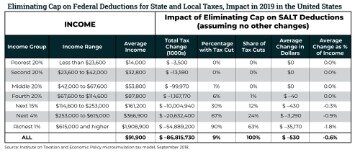Sale of Assets journal entry examples
Contents:


On July 1, Matt decides that his company no longer needs its office equipment. Good Deal used the equipment for one month and had recorded one month’s depreciation of $20. This means the book value of the equipment is $1,080 (the original cost of $1,100 less the $20 of accumulated depreciation). On July 1, Good Deal sells the equipment for $900 in cash and reports the resulting $180 loss on sale of equipment on its income statement.
When you write something off the books, accounts with normal debit balances are credited and accounts with normal credit balances are debited. When there are no proceeds from the sale of a fixed asset and the asset is fully depreciated, debit all accumulated depreciation and credit the fixed asset. Using the preceding examples, we will subtract the accumulated depreciation of $15,000 from the machinery’s original cost of $50,000.
In the example below, accumulated depreciation is $45,000; the original cost of the asset is $75,000; and the sales price is $10,000. After depreciation, a loss of $20,000 is recognized on the disposal of the asset. Changes to the status of an individual asset do not signal impairment, and, frequently, only the estimated service life needs adjusting.
‘Load Up,’ Says Raymond James About These 2 ‘Strong Buy’ Stocks – Yahoo Finance
‘Load Up,’ Says Raymond James About These 2 ‘Strong Buy’ Stocks.
Posted: Sun, 02 Apr 2023 07:00:00 GMT [source]
When you place an insurance claim on fixed assets, you must take certain accounting steps. Remove the asset from your books, but record the payout as a proceed. You can record the transaction when payment is possible or when you receive it. The best practice is to record the payout when you receive it. If the insurance policy carries a coinsurance clause, you are required to carry insurance to cover at least 60% of the asset’s fair market value. To calculate the loss on disposal of an asset, subtract the accumulated depreciation from the original cost, and then subtract the sales price.
Fixed asset disposal accounting
The equipment will be disposed of on 4/1 in the fourth year, which is three months after the last annual adjusting entry was journalized. The first step is to journalize an additional adjusting entry on 4/1 to capture the additional three months’ depreciation. Since the annual depreciation amount is $1,200, the asset depreciates at a rate of $100 a month, for a total of $300. The company breaks even on the disposal of a fixed asset if the cash or trade-in allowance received is equal to the book value.

Asset impairment is akin to an advanced depreciation, which is when you reduce the potential benefit from an asset. When fixed assets undergo a significant change in circumstance that may reduce their gross future cash flow to an amount below their carrying value, apply an impairment test. Below is an impairment journal entry when the loss is $50,000. A similar situation arises when a company disposes of a fixed asset during a calendar year. The adjusting entry for depreciation is normally made on 12/31 of each calendar year.
As a voided check of this journal entry, both account balances related to the discarded truck are now zero. The equipment will be disposed of on 10/1 in the fourth year, which is nine months after the last annual adjusting entry was journalized. The first step is to journalize an additional adjusting entry on 10/1 to capture the additional nine months’ depreciation. The first step is to determine the book value, or worth, of the asset on the date of the disposal.
The general ledger shows the equipment’s cost was $50,000 and its accumulated depreciation as of December 31 was $39,600. If the equipment is sold on January 31, Onyx Group of companies must record January’s depreciation. Start the journal entry by crediting the asset for its current debit balance to zero it out. Then debit its accumulated depreciation credit balance set that account balance to zero as well. Debit Cash or the new asset if either is received in exchange for the one disposed of, if applicable. Finally, debit any loss or credit any gain that results from a difference between book value and asset received.
Entering disposal information
Selling assets for the total depreciated value indicates that the business made no gain or loss upon selling them. Conversely, selling an asset for an amount exceeding the depreciated value means the businesses gained cash from the sale. A fixed-asset accountant is usually a certified public accountant who specializes in the correct accounting of a company’s fixed assets. Fixed-asset accountants often work with other accounting roles to calculate asset depreciation. They also ensure that accounting departments record and track assets correctly as well as handle tax accounting requirements for fixed assets.
Such a receipt would show up in the Consideration received column. The second method is to post the transaction to Fixed assets – loss on disposal after disposal. The net effects are the same, but the second method would not show on the Fixed Asset Summary, because the transaction would not be posted directly to the asset’s subaccount. The effect of the first two entries is that the cost and accumulated depreciation are removed from the normal accounts. Also, the disposal of fixed assets account now shows the book value of the item to be disposed of. When there is a gain on the sale of a fixed asset, debit cash for the amount received, debit all accumulated depreciation, credit the fixed asset, and credit the gain on sale of asset account.
Example 1: Journal entry for sale of asset
When an asset is sold, the business must account for its depreciation up to the date of sale. This means that as a first step, the business may be required to record a depreciation entry before the sale of the asset to ensure it is current. An important thing to take note of is partial-year depreciation. A business may only own depreciable assets for a portion of a year in the year disposal . Businesses must be consistent in how they record depreciation for assets owned for a partial year. A common method is to allocate depreciation expense based on the number of months the asset is owned at time of disposal.
- Changes to the status of an individual asset do not signal impairment, and, frequently, only the estimated service life needs adjusting.
- This presents a problem because any gain or loss on the sale of an asset is included in the amount of net income shown in the SCF section operating activities.
- On the other hand, when the company incurs a loss by selling the assets, a ‘loss on sale of asset’ journal entry is to be booked.
- They also ensure that accounting departments record and track assets correctly as well as handle tax accounting requirements for fixed assets.
- Retirement occurs when a depreciable asset is taken out of service and no salvage value is received for the asset.
- Also, one may be able to claim a higher amount if they offloaded their assets before March 11, 2020.
Anything under construction exists in an accumulation account (for example, Construction-in-Process) until the work is complete. Upon completion, an accountant will move the asset to the appropriate fixed-asset account. It gives a complete summary of all transactions relating to the sale of assets in one place. In these situations, the SEC staff has indicated that there are two acceptable interpretations of the literature for accounting for the loss on sale at the held-for-sale date. The carrying amounts are adjusted, if necessary, for the result of each test prior to performing the next test.
What is the entry to remove equipment that is sold before it is fully depreciated?
If a company buys an asset for $5000 and expects to sell it for $1000 in three years, it can then depreciate $4000. At the end of three years, the company expects to sell the asset for $1000. This option spreads the depreciation evenly over the useful life of an asset. You can also distinguish assets by their physicality , convertibility and their business usage.
The trade-in allowance of $10,000 plus the cash payment of $20,000 covers $30,000 of the cost. The company must take out a loan for $10,000 to cover the $40,000 cost. The trade-in allowance of $5,000 plus the cash payment of $20,000 covers $25,000 of the cost. The company must take out a loan for $15,000 to cover the $40,000 cost. The trade-in allowance of $7,000 plus the cash payment of $20,000 covers $27,000 of the cost.
For example, a business with a 30th June financial year, disposes an asset with an annual depreciation of $10000 on 1st January. In this instance, the depreciation expense would thus be $5000 ($10000 × 6/12), instead of $10000. The first is to post a receipt in the Receipts & Payments tab to Fixed assets, at cost and the specific asset’s subaccount prior to recording disposal. This reduces the purchase cost balance, decreasing any loss on disposal.
Loss due to any accident, fire, obsolescence, etc., during its useful life. Planned transactions involving foreign investments that, when consummated, will not cause a reclassification of some amount of the cumulative translation adjustment. Let us look at an example of a gain and loss alternative using the MAAS Corporation data. 10.5 Compute, interpret and compare return on investment and residual income. 10.2 Evaluate how responsibility accounting is used to help manage a decentralised organisation.
Asset Disposal Account and its Uses:
You’ll also want to create a liability record for the loan and record the loan as a debt. If the organization has not yet received the asset, it is still a current asset, not a fixed asset. Below are the most frequently asked questions concerning fixed asset accounting, as well as the concise, clear answers you’re seeking. In other cases, a reporting entity may decide to dispose of a segment, but is uncertain whether it can locate a buyer at a price that is acceptable and, if not, it will spin off the segment to its shareholders.
In the Fixed Asset Summary, the Acquisition cost column includes all purchases and upwards revaluations. Consideration received includes all sales posted to the asset’s subaccount and downwards revaluations. Depreciation includes all depreciation during the reporting period.
See FSP 27 for further details regarding the discontinued operations criteria, as well as presentation and disclosure requirements for components qualifying as a discontinued operation. A company may dispose of a fixed asset by trading it in for a similar asset. This must be supplemented by a cash payment and possibly by a loan. The company receives a trade-in allowance for the old asset that may be applied toward the purchase of the new asset.
Profit includes amounts transferred to other accounts when the asset is disposed. The Accumulated Depreciation account contains all the life-to-date depreciation of an asset and appears on the balance sheet as an offset to the Fixed Assets account. When an asset is disposed of, all of the assets’ accumulated depreciation must be removed from the Accumulated Depreciation account with a debit entry. If the sales price of the asset is greater than the asset’s book value, the company records a gain but if the sales price of the asset is less than the asset’s book value, the company records a loss.
Gresham House Energy Storage Fund : Notice of AGM – Marketscreener.com
Gresham House Energy Storage Fund : Notice of AGM.
Posted: Fri, 21 Apr 2023 08:50:12 GMT [source]
This is determined by comparing the asset’s carrying amount to the proceeds from the asset’s sale, if any. When the proceeds exceed the carrying amount, a gain on disposal is recognised. When the carrying amount exceeds the proceeds, a loss on disposal is recognised.

The result reflects the depreciation for that specific timeframe. Companies can utilize double declining method to identify how the value of an asset depreciates with time. Computing the disposal value using this technique involves dividing 1 by the useful life of the asset 1 and multiplying the result by 2. “For your business, the key is understanding the distinction between the capitalizable costs and those that should be immediately expensed. But broadly, if the cost you’re incurring is material and it is necessary to extend an asset’s useful life beyond one year, then that is a cost that should be capitalized,” advises Adams.


